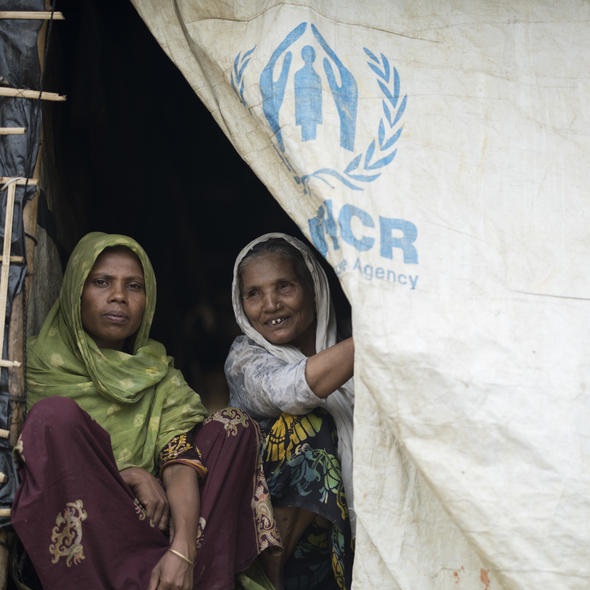Socio-economic assessment of IDPs and returnees in the five most populated settlements of Afghanistan's Herat Province - 2017
Afghanistan, 2017
Get MicrodataIdentification
UNHCR_AFG_2017_SEA_Herat_v2.1
Socio-economic assessment of IDPs and returnees in the five most populated settlements of Afghanistan's Herat Province - 2017
| Name | Country code |
|---|---|
| Afghanistan | AFG |
Other Household Survey [hh/oth]
UNHCR conducts socio-economic assessments of persons-of-concern (i.e. refugees, asylum-seekers, IDPs, etc.) in a variety of countries in order to inform and improve its programming with the goal of promoting self-reliance. While these assessments are not fully standardized and are tailored to their specific country context, the quantitative surveys share strong similarities in their design and objectives, and are therefore considered a survey series for the purpose of microdata documentation/archiving.
At the end of 2015, Herat Province was among the highest IDP hosting provinces in Afghanistan, accounting for approximately 10% of the country's IDP population. In order to obtain reliable information on the socio-economic conditions of IDPs and returnees in Herat Province, a comprehensive sample survey was carried out among 11,264 households in the 5 most populated IDP/returnee settlements (Shagofan, Jebraiel, Maslakh, Now Abad and Kahdistan) in 2017.
Sample survey data [ssd]
Household and individual
Version
2.1: Edited, anonymous dataset for licensed distribution.
2018-12-15
Scope
The scope of this socio-economic assessment includes:
- Identification of the household
- Demographic composition of the household
- Information about the wider community
- Access to services (electricity, water, health, education)
- Child education
- Economic activity of the main respondent
- Consumption expenditure
- Skills
- Priority needs
| Topic |
|---|
| Livelihood & Social cohesion |
| Housing, Land and Property |
| Basic Needs |
Coverage
IDP/returnee settlements Shagofan, Jebrael, Maslakh, Now Abad and Kahdistan (all located in Afghanistan's Herat Province).
All IDPs and returnees living in the five most populated IDP/returnee settlements of Afghanistan's Herat Province, namely Shagofan, Jebrael, Maslakh, Now Abad and Kahdistan.
UNHCR PPG: 3AFGA, 4AFGA
Producers and sponsors
| Name |
|---|
| UNHCR |
| Name |
|---|
| CRDSA |
Sampling
The survey's objective was to deliver representative data of all IDPs and returnees living in the five most populated IDP/returnee settlements of Afghanistan's Herat Province, namely Shagofan, Jebrael, Maslakh, Now Abad and Kahdistan. The total population of IDPs/returnees in these settlements at the time of the survey was estimated at around 38,700 households.
For this survey a stratified, single-stage (i.e. non-clustered) sample design was applied. The five settlements were considered sampling strata. Within each of these strata, a sample of households was drawn systematically (based on alphabetic sort order) from the "list of inhabitants".
The total sample size was 11,264 IDP/returnee households.
NB: The original data collection also included a small number of households from the neighbouring host community; however, these observations were dropped from the public-release version of the dataset.
None
Information unavailable
No weights were aplied during the initial data analysis. However, given that selection probailities differed across sampling strata, the public-release version of the data contains sampling weights calculated ex-post, which data users may wish to apply during further analysis.
Survey instrument
All questionaires are provided in section "external ressources".
Data collection
| Start | End |
|---|---|
| 2017 | 2017 |
| Name |
|---|
| CRDSA |
| UNHCR |
Data was collected on paper through face-to-face interviews by 150 enumerators and 15 supervisors. Data entry was carried out at a centralized location.
Data processing
The dataset presented here has undergone light checking, cleaning and restructuring (data may still contain errors) as well as anonymization (includes removal of direct identifiers and sensitive variables, and grouping values of select variables). Moreover, households interviewed from host communities were removed.
Data Access
| Is signing of a confidentiality declaration required? | Confidentiality declaration text |
|---|---|
| yes | No attempt will be made to identify respondents or microdata providers, and no use will be made of the identity of any person, facility or establishment discovered inadvertently. Any such discovery would immediately be reported to UNHCR, to allow evaluation of further use, apply further statistical disclosure control methods, impose further restrictions on access, or appropriately re-classify the data. No attempt will be made to create links between datasets provided by UNHCR, or between UNHCR data and other datasets that could identify individuals or organizations. |
UNHCR (2017). Socio-economic assessment of IDPs and returnees in the five most populated settlements of Afghanistan's Herat Province. Accessed from UNHCR's Microdata Library: http://microdata.unhcr.org
Disclaimer and copyrights
UNHCR does not warrant in any way the accuracy of the information and data contained in the datasets and shall not be held liable for any loss caused by reliance on the accuracy or reliability thereof.
Contacts
| Name | Affiliation | |
|---|---|---|
| Solutions | UNHCR | solutions@unhcr.org |
Metadata production
UNHCR_AFG_2017_SEA_Herat_v1.2
| Name |
|---|
| UNHCR |
2019-07-22
Metadata version
Version 1.2 (July 2019)
